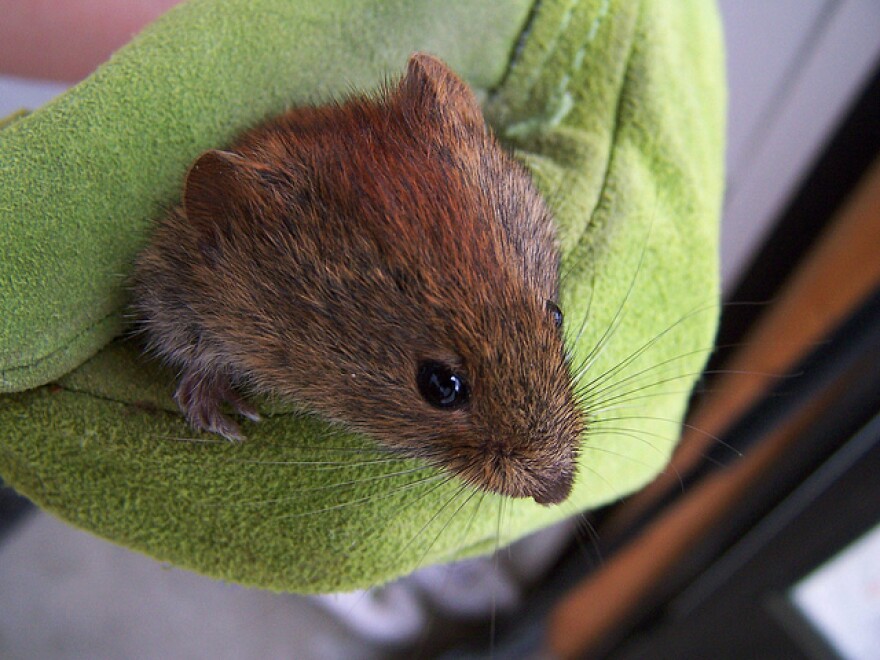Southern Idaho gardeners and farmers are seeing an increase in voles, and the destruction they can cause, this year.
Voles are four-to-five inch long mammals, often mistaken for mice, that like to eat green vegetation.
“It’s a big problem in southern Idaho,” says Ronda Hirnyck. She’s the University of Idaho Extension pesticide specialist in Boise.
Vole populations tend to be cyclical. They grow large and then die off naturally. But Hirnyck says for some reason they have been increasing over the past two years.
“We think it’s weather related, but we don’t know. With climate change we’ve seen warmer weather, less severe winters. So they don’t die off.”
Along with milder winters, more spring rain means more vegetation for the voles to munch on.
Experts expected the vole population to die down last year, but it didn’t. Eastern Idaho, including the Magic Valley, which had a lot of rain in the spring, is where it’s bad, says Hirnyck. But she’s also seeing more voles in the Treasure Valley this year. Even in her own garden.
“I have a large garden; I probably have 30 voles in my garden that I’ve seen this year. They’re pulling green beans down into their holes.”
Hirnyck has seen them in backyard gardens and orchards, along with farmers' fields of sugarbeets, potatoes and winter wheat.
There are a few things you can do to get rid of voles. Poison is one way. Hirnyck says it can be used, carefully, on lawns and orchards. She cautions each poison or bait is different and directions should always be followed for their use. Use bait stations, which voles can fit into, but other animals, and children, can’t reach inside. But don’t use poison in gardens - it’s illegal and unsafe.
“Reduce their habitat,” by digging up four or five feet of bare ground around the edge of your garden. Hirnyck says voles hate crossing bare ground and will avoid the dirt.
“That might keep them from traveling from your yard into your vegetable garden,” says Hirnyck.
There is also a special wire mesh barrier you can put around your trees to protect the bark. She advises putting it six-to-nine-inches up the trunk so the voles can’t reach over it, even if there is snow on the ground.
Or get a cat. “If you have a cat it works great…” to keep the vole population down.
But, “sometimes you just have to live with it,” she says, especially if you have a garden. That’s what she did this year. “I had way too much, so I shared,” with the voles.
Find Samantha Wright on Twitter @samwrightradio
Copyright 2015 Boise State Public Radio



